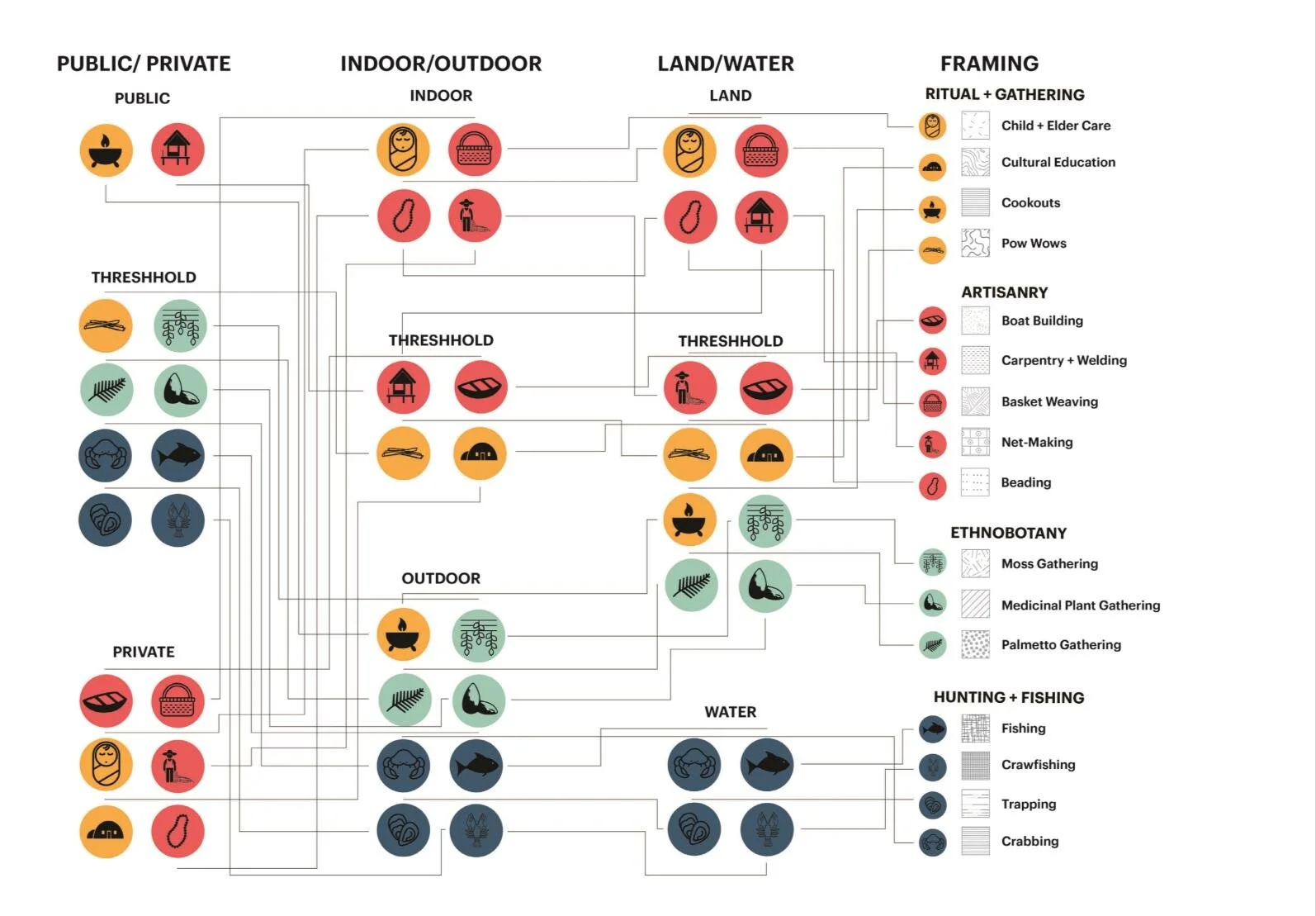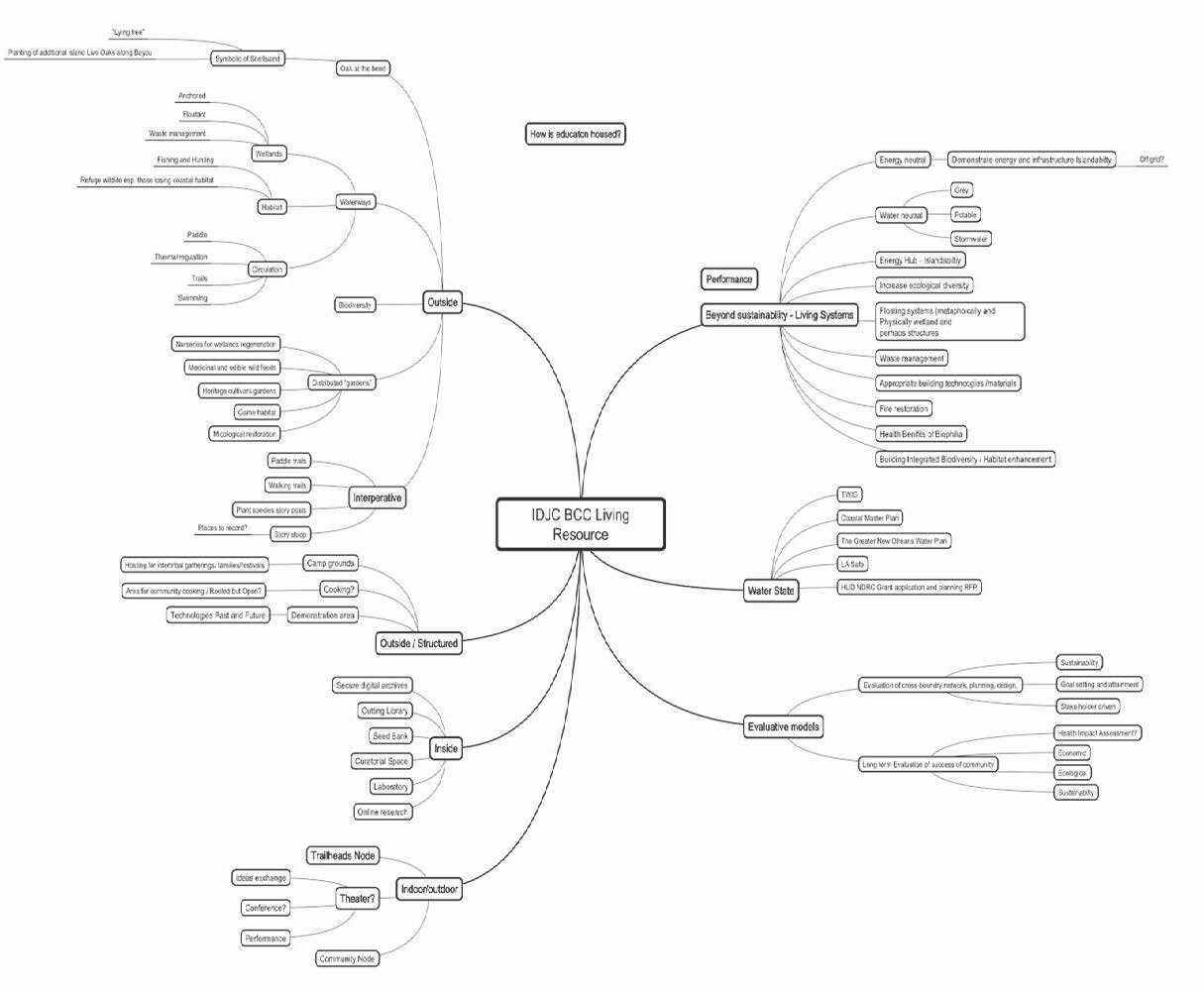Isle de Jean Charles
The residents of IDJC struggle with stronger storms, more frequent and damaging floods, the loss of wetlands and wildlife around the island, and damage to their homes. Many former residents have left the island over the past half-century, largely due to hurricane or flood damage and impeded access to work and school due to regular flooding on the island road. The island has lost 98% of its land to erosion; 320 acres of the original 22,000 acres remain above sea level.
People who remained have continuously elevated their homes to protect them from future floods.
Rising sea levels in Isle de Jean Charles (IJDC 2019)
Adaptation and Mitigation
In the early 2000s, a 72- mile system of dams, levees and locks was designed to protect parts of coastal Louisiana. IDJC was not included nor protected in the plans.
Project Initiation
The project started with the IDJC Tribal Council creating a resettlement plan that aimed to move the Tribe inland and to reunite displaced members, many of whom moved following major storms. The Tribe’s plan is built around a ‘community of practice.’ In 2015, the IDJC Tribe partnered with Louisiana’s Office of Community Development, incorporating the resettlement plan into a successful grant application to the U.S. Department of Housing and Urban Development’s National Disaster Resilience Competition. As a result, $48 million was earmarked for the Tribe’s resettlement plan.
IJDC new site location (IJDC 2019)
Process
The Resettlement of IDJC has taken a phased approach. The first phase focused on data gathering and engagement, which included a local census and a survey of resident’s needs and priorities. It also included a land use analysis of the island. During the second phase, a new relocation site was selected. Residents were given opportunities to visit the potential sites to provide feedback to be included in the decision-making. A community meeting was held to discuss the ‘pros and cons’ of each site and a site preference survey was administered. The land for the selected site was then acquired, and iterations of a Community Master Plan for ‘The New Isle’ were developed in collaboration with the community.
IJDC community participatory design process (IJDC 2019, p. 4).
Community Engagement
As part of the first phase, the design team sought to understand the community resident’s priorities and values. This was done through a community meeting and subsequent household interviews.
At the second community meeting and during visits to households who did not attend the meeting, residents were provided a map depicting future flood risk in the region and then asked to recommend general site locations for resettlement. Most residents chose the safest location.
The community formed committees to guide the relocation process. A selection committee, which included representatives from the island, chose the consultant team to develop a master plan for the new site. A steering committee acted as an advisory board and liaison between the state and the island community. In addition, an academic advisory committee was engaged.
The community at large was invited to three design workshops to explore the design options developed by the consultant team.
The relocation is voluntary and current and past residents have been provided with three options to relocate: relocate to a new home in the New Isle; relocate to an existing home in Louisiana; or relocate to an improved lot in the New Isle. See Appendix B for more details. The first two options are available for current, primary residents of the island or past permanent, primary residents who have been displaced since August 28, 2012 (Hurricane Isaac) and do not currently own an off-island home. The third option is available to past residents who were displaced before Hurricane Isaac and demonstrates financial ability to build a home.
Mapping can take many forms. The goal is to establish a foundation for the community to be build and share its aspirations and to being to see a process of becoming whole.
“The process of sharing stories and listening, so critical to establishing context and understanding, can help build deep personal connections that are absolute prerequisites for participatory engagement, planning partnerships and trust.” (IJDC, 2019, p.17)
Outcomes
The discord between the Tribe and the State has stalled the progress of the project. Some Tribal council members worry that the State has diverged from the Tribe’s original vision so radically that the new development could become a resettlement subdivision rather than the model sustainable and disaster-resilient community they had envisioned. There is a fear among the residents that a state-run community will turn out to be similar to a low-income housing assistance program.
Some tribal members opted to move off the island to interim housing while the development is being built. This has separated the community and some residents don’t feel safe.
Throughout the community relocation process, a Field Guide and Toolkit (Appendix A) was developed to provide resources to other communities facing similar risks and adaptation needs. The goal of the work is to be a resource for communities who feel that planning processes must account for the future preservation and regeneration of its culture and lifeways.
The New Isle Site Plan (Louisiana Office of Community Development, 2020)
References:
Baurick, T. (August 17, 2020) How lessons from Isle de Jean Charles could guide federal climate migration planning. Nola.com. https://www.nola.com/news/environment/article_8f6c9338-de68-11ea-9f99-534747c43bd0.html
Dermansky, J. (February 5, 2019) Louisiana and Isle de Jean Charles Tribe Seek to Resolve Differing Visions for Resettling ‘Climate Refugees’. DeSmog. https://www.desmog.com/2019/02/05/louisiana-isle-de-jean-charles-tribe-plans-resettlement-climate-refugees/
Dermansky, J. (May 22, 2020) Louisiana Breaks Ground on Isle de Jean Charles Resettlement Project Amid Pandemic. DeSmog. https://www.desmog.com/2020/05/22/isle-de-jean-charles-tribe-louisiana-resettlement-construction/
Isle de Jean Charles. (2019) The Story of Isle de Jean Charles. State of Louisiana. http://isledejeancharles.la.gov/
Louisiana Office of Community Development. (2020) Resettlement of Isle de Jean Charles: Background and Overview.
Naguin, A., Comardelle, C., Jerolleman, A., Lesen, A.E., Peterson, K., Evans, J., Tooher, E., Mansfield, J., Corum, N., Jessee, N., Kunkel, J., Bainbridge, S., Shao, A., Udvardi, M., Billiot, W., Dardar, T., Naguin, J.R. (2019) Preserving our Place, A Community Field Guide to Engagement, Resilience, and Resettlement: Community regeneration in the face of environmental and developmental pressures.









